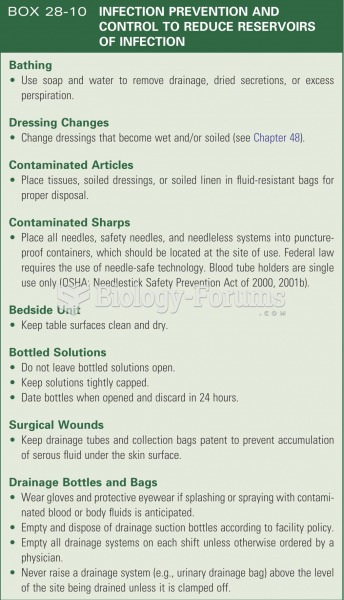|
|
|
More than 4.4billion prescriptions were dispensed within the United States in 2016.
The average human gut is home to perhaps 500 to 1,000 different species of bacteria.
The senior population grows every year. Seniors older than 65 years of age now comprise more than 13% of the total population. However, women outlive men. In the 85-and-over age group, there are only 45 men to every 100 women.
Walt Disney helped combat malaria by making an animated film in 1943 called The Winged Scourge. This short film starred the seven dwarfs and taught children that mosquitos transmit malaria, which is a very bad disease. It advocated the killing of mosquitos to stop the disease.
More than 30% of American adults, and about 12% of children utilize health care approaches that were developed outside of conventional medicine.







